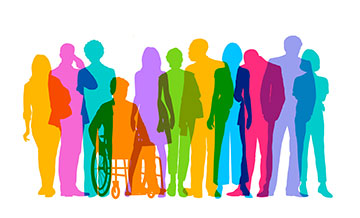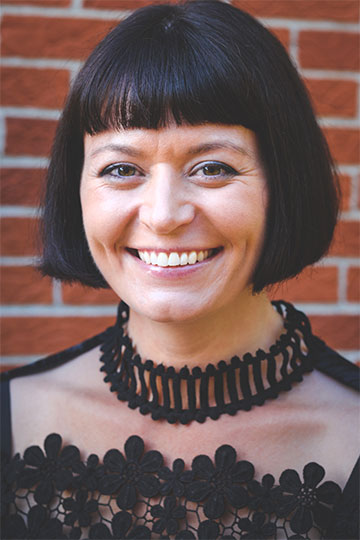
[Image: smartboy10 / Getty Images]
There have been many studies showing that various marginalized groups—women, people of color, LGBTQ people and people with disabilities—often face disadvantages in science, technology, engineering and math (STEM) fields. However, until recently, studies rarely examined the identities’ accumulated effect on STEM professionals or confirmed that those who do not belong to marginalized groups experience privilege.
To understand how the intersection of identities would affect someone’s STEM career, a sociologist at the University of Michigan, USA, conducted a survey of more than 25,000 full-time STEM workers in the United States and found that white, able-bodied, heterosexual men do indeed experience the most systematic advantages compared to those in other groups (Sci. Adv., doi: 10.1126/sciadv.abo1558).
“Part of the goal of the paper was actually to center issues of privilege within STEM, which really don’t get much attention” compared with disadvantages, says study author Erin Cech. At the same time, she says her intention was not to write a “gotcha” paper that shames heterosexual white men without disabilities. The intention was to understand the patterns of disadvantage and promote a dialogue around privilege and disadvantage in STEM.
Pitfalls of single-identity studies
So-called single-axis studies that examine a single personal identity and its effect on someone’s STEM career are important because they allow researchers to explore how certain cultural structures lead to certain disadvantages, Cech says. These studies also enable examinations into the historical patterns of oppression that led to the current state of inequality.
However, single-axis studies are often performed in lieu of intersectional analyses, Cech adds. Without intersectional studies, people would approach the issue of gender inequality, for example, with the problematic assumption that the experience of white, able-bodied women is the same as that of racially minoritized women or women with disabilities.
And the survey says…
Cech found that white, able-bodied, heterosexual men have better work-related experiences, are treated with more respect by their colleagues, earn higher salaries and have stronger intentions to continue working in their fields than their peers
To find out how combinations of different identities contribute to advantages in STEM careers, Cech surveyed 25,324 people in the United States with full-time STEM jobs, recruited from 21 STEM professional societies (Cech says, for confidentiality reasons, she cannot disclose which societies participated in the survey.) The survey covered four dimensions of work experience consequential for STEM careers: social inclusion and harassment experiences; professional respect by colleagues; career rewards, including salary and advancement opportunities; and intentions to stay in one’s STEM career long term.
Cech then divided the survey data into 32 different categories of intersecting identities based on the person’s gender, race, sexuality and disability status. When she analyzed the survey responses, Cech found that white, able-bodied, heterosexual men have better work-related experiences, are treated with more respect by their colleagues, earn higher salaries and have stronger intentions to continue working in their fields than their peers in 31 other categories. These advantages were not due to the education level, discipline, age or employment sector of the respondents, as those factors were held constant during the analysis.
Cech then further analyzed the data to determine if the benefits were because of other variables, such as differences in human capital, work effort, job characteristics, background or family responsibilities. Her results indicated that the majority of the advantages experienced by white, able-bodied, heterosexual men could not be explained by those other factors. The salary benefit was the only one that could mostly be explained by the type of job and the background of the respondents, but even then, about 30% of the salary difference was unaccounted for.
Intersectional patterns

Erin Cech [Image: M. Valentini]
Cech says it is important to point out that the results represent the averages within each category. “So, not every heterosexual white man without disabilities experiences these kinds of privileges,” she says, “and the experiences of these privileges don’t mean that heterosexual white men without disabilities always have positive experiences at work.”
“But [the privileges] are about having less exposure to the issues of negative treatment that other STEM professionals have to deal with more frequently,” Cech says.
Some of Cech’s previous work looked at the prevalence of meritocratic ideology—the belief that STEM fields are already fair and equitable and, therefore, diversity and inclusion efforts are not needed. “This [new study] really speaks back to that to say, ‘Look at all of these patterns that exist. They’re across different socio-demographics and across many different types of workplace experiences.’”
So, the matter of advantages and disadvantages is not just about inclusion and exclusion, Cech argues. “It’s about professional respect and career opportunities—even salary,” Cech says. “And I think that is particularly powerful.”
What next?
When asked about the next step that STEM fields should take to combat the biases found in her study, Cech says, “What to do about [the biases] has always been the million-dollar question. If we had a good single answer to that … this would have been solved 40 years ago.”
Nonetheless, she says her study points to the importance of mitigating biases at different levels within STEM. For instance, on a professional level, scientific societies could think about whom they typically use as examples of excellence because those displays tend to reinforce the kinds of biases documented in the current study. STEM institutions could also rethink their processes for hiring and promotions, she adds.
But one of the most important action items is for white, able-bodied, heterosexual men to become reflexive allies to those in underrepresented groups, Cech says. “There are many heterosexual white men without disabilities who want to contribute to diversity and inclusion efforts but aren’t sure where to start, in part because they don’t understand how to think about or how to situate their own privilege within the context of STEM,” she says. “And I think research like this can be helpful for arming heterosexual white men without disabilities with more knowledge to be able to think about how they might contribute to DEI [diversity, equity and inclusion] efforts in their organizations or professional societies.”
